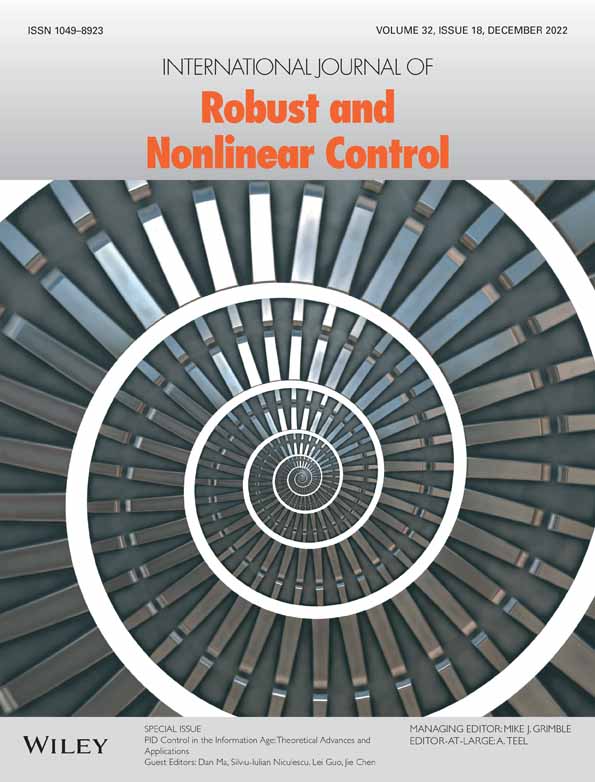Flocking control for Cucker–Smale model under denial-of-service attacks
Funding information: China Postdoctoral Science Foundation, Grant/Award Number: 2021M700696; National Natural Science Foundation of China, Grant/Award Number: 62103080; National Postdoctoral Program for Innovative Talents, Grant/Award Number: BX2021056; Natural Science Foundation of Sichuan Province, Grant/Award Number: 2022NSFSC0878; Sichuan Science and Technology Program, Grant/Award Number: 2021YFH0042
Abstract
In this article, the issue of flocking control for Cucker–Smale model under denial-of-service (DoS) attacks is discussed. It is assumed that there is an active stage and an asleep stage for each period of the DoS. Malicious attacks partially or completely destroy the network communication links in the active stages, and replenish energy without any attacks in the dormant stages. By constructing the agents' position and velocity errors, the C–S model under DoS attacks is equivalently transformed into error systems. By applying the approach of products convergence for infinite sub-stochastic matrices, a sufficient condition for producing the flocking behavior is obtained. An upper bound of relative errors for agents' final positions is established, which depends on initial states, the topology structure and the weight function. Finally, simulation experiments verify the effectiveness of the theoretical results.
Open Research
DATA AVAILABILITY STATEMENT
Data sharing not applicable to this article as no datasets were generated or analyzed during the current study.




